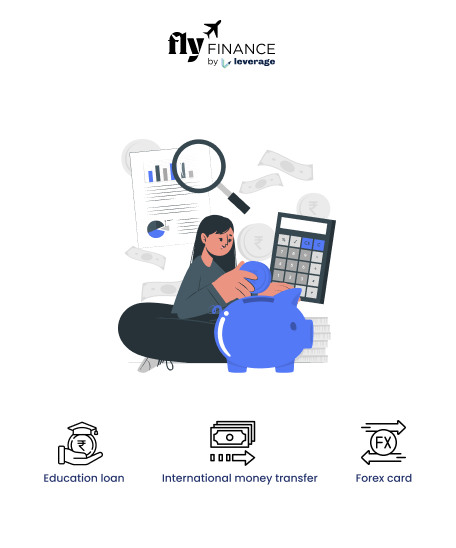Studying abroad is a dream for many Indian students. While selecting the perfect university, preparing for entrance exams, and applying for visas are critical steps, one often overlooked aspect is understanding the financial regulations around outward remittance. The Foreign Exchange Management Act (FEMA), 1999, governs such remittances from India. For international students planning to study abroad, adhering to FEMA guidelines ensures a smooth transfer of funds. Check here everything you need to know about FEMA guidelines for outward remittance, specifically for Indian students.
Table of contents
What is FEMA Guidelines for Outward Remittance?
The Foreign Exchange Management Act (FEMA), enacted in 1999, regulates foreign exchange transactions in India. Managed by the Reserve Bank of India (RBI), FEMA ensures that foreign currency transactions are legitimate, seamless, and within prescribed limits. It outlines the limits of international transactions, purpose code for outward remittance, approval channels etc. FEMA also extend to all branches, offices, and agencies located outside India that are owned or controlled by a person residing in India. Additionally, it applies to any violation committed outside India by any individual subject to the provisions of this Act.
Also Read: Check here all about How Much Does it Cost to Study MS in Australia
FEMA Guidelines for Outward Remittance
The FEMA (Foreign Exchange Management Act) guidelines regulate outward remittance from India to ensure compliance with foreign exchange laws. Under the Liberalized Remittance Scheme (LRS), residents can remit up to USD 250,000. For students, remittance requires documents such as an admission offer, fee structure etc. There are charges and taxes like the 5% Tax Collected at Source (TCS) for remittances exceeding INR 7 lakh. Check the details below:
Limits on Outward Remittance
Under the Liberalized Remittance Scheme (LRS), Indian residents are permitted to remit up to USD 250,000 per financial year for current or capital account transactions. Students can use this limit to pay for tuition fees, living expenses, and other study-related costs. There are two types of accounts through which you can make the transactions which are (a) Capital Account Transactions, and (b) Current Account Transactions. You also require the purpose code of outward remittance. For education, the code S0305 (Education-related expenses) is commonly used.
Also Read: Check this blog and understand what is the process of education loan
Approved Channels for Remittance
Approved channels for remittance under FEMA include authorized dealer banks and financial institutions licensed by the Reserve Bank of India (RBI). These institutions ensure that all outward remittances comply with regulatory norms, safeguarding both the sender and recipient. Commonly used options include nationalized and private banks like SBI, HDFC, and ICICI, which offer secure and transparent transfer processes. Students and individuals remitting funds abroad must complete formalities such as submitting required documents and filling out the A2 form to ensure compliance and avoid delays. Always use these approved channels for a hassle-free and lawful remittance experience. Check here some important steps involved in an outward remittance:
- Choose a bank authorized by the RBI to handle outward remittances. Banks like SBI, HDFC, and ICICI are popular options.
- Provide all required documents, including your admission offer and fee structure.
- Complete the A2 form, declaring the purpose and details of your remittance. You must check and fill the Form A2 properly.
- Banks charge a nominal fee for outward remittance. Compare rates to ensure cost-effectiveness.
- After verifying all details, the bank processes your remittance to the foreign university or your account abroad.
Understanding FEMA guidelines for outward remittance is crucial for Indian students planning to study abroad. It ensures a hassle-free transfer of funds, allowing you to focus on your education and future. Always consult with your bank or a financial advisor to stay updated on the latest regulations. Check some common FAQs based on FEMA Guidelines below:
FAQs
FEMA (Foreign Exchange Management Act) regulates foreign exchange transactions to ensure compliance with Indian laws. It governs remittances, including those for education, ensuring legitimate and seamless fund transfers.
LRS allows Indian residents to remit up to USD 250,000 per financial year for permissible purposes, including education, travel, and maintenance of relatives abroad.
Students can remit up to USD 250,000 annually under LRS for tuition fees, living expenses, and other education-related costs.
Key documents include a valid passport, admission offer letter, fee structure or invoice, PAN card, and a duly filled A2 form provided by the bank.
The A2 form is a declaration form required for outward remittance, stating the purpose and details of the transaction as per RBI regulations.
No, remittances must be routed through authorized dealer banks or financial institutions approved by the RBI to ensure compliance with FEMA.
Yes, a 5% Tax Collected at Source (TCS) is applicable on remittances exceeding INR 7 lakh in a financial year. This amount can be adjusted against your income tax liability.
Exceeding the LRS limit requires special permission from the RBI and additional documentation to justify the remittance purpose.
The purpose code for education-related remittance is S0305, which must be mentioned while initiating the transfer.
Non-compliance with FEMA can lead to penalties, including fines and legal action. Ensure all transactions are within the prescribed limits and through authorized channels.
To know more about education loans, the best bank accounts for students, forex and banking experience for global students or international money transfers, reach out to our experts at 1800572126 to help ease your study abroad experience.





























